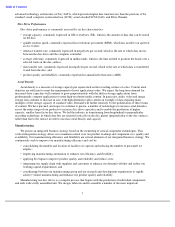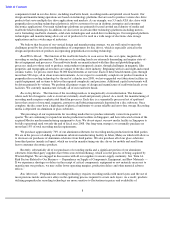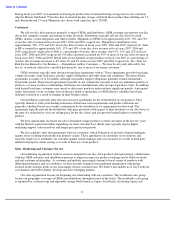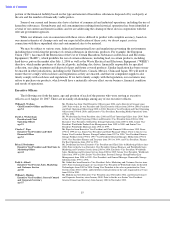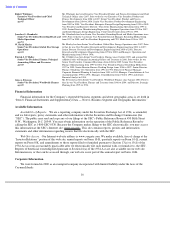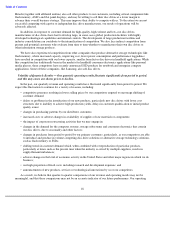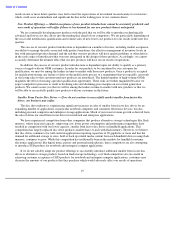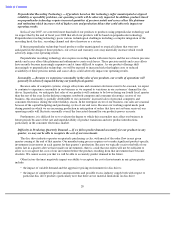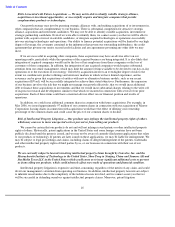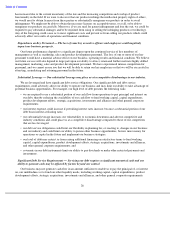Seagate 2006 Annual Report Download - page 20
Download and view the complete annual report
Please find page 20 of the 2006 Seagate annual report below. You can navigate through the pages in the report by either clicking on the pages listed below, or by using the keyword search tool below to find specific information within the annual report.
Table of Contents
Risks Related to Our Business
Competition — Our industry is highly competitive and our products have experienced and will continue to
experience significant price erosion and market share variability.
Even during periods when demand is stable, the disc drive industry is intensely competitive and vendors
typically experience substantial price erosion over the life of a product. Our competitors have historically offered
existing products at lower prices as part of a strategy to gain or retain market share and customers, and we expect
these practices to continue. We will need to continually reduce our prices to retain our market share, which could
adversely affect our results of operations.
We believe this basic industry condition of continuing price erosion and market share variability will continue,
as our competitors engage in aggressive pricing actions targeted to encourage shifting of customer demand. As a
result, the pricing environment in 2007 continued to be very competitive, especially in the March and June 2007
quarters in the mobile compute market and the market for high capacity 3.5-inch ATA disc drives, and we expect
pricing to remain competitive for the remainder of fiscal year 2008 as our competitors continue these efforts.
To the extent that historical price erosion patterns continue, product life cycles may lengthen, our competitors
may have more time to enter the market for a particular product and we may be unable to offset these factors with
new product introductions at higher average prices. A second general industry trend that may contribute to increased
average price erosion is the growth of sales to distributors that serve producers of non-branded products in the
personal storage sector. These customers generally have limited product qualification programs, which increases the
number of competing products available to satisfy their demand. As a result, purchasing decisions for these
customers are based largely on price and terms. Any increase in our average price erosion would have an adverse
effect on our result of operations.
Additionally, a significant portion of our success in the past has been a result of increasing our market share at
the expense of our competitors, particularly in the notebook and small form factor enterprise markets. Our market
share for our products can be negatively affected by our customers’ diversifying their sources of supply as our
competitors enter the market for particular products. When our competitors successfully introduce product offerings,
which are competitive with our recently introduced new products, our customers may quickly diversify their sources
of supply. Any significant decline in our market share would adversely affect our results of operations.
Principal Competitors — We compete with both independent manufacturers, whose primary focus is producing
technologically advanced disc drives, and captive manufacturers, who do not depend solely on sales of disc
drives to maintain their profitability.
We have experienced and expect to continue to experience intense competition from a number of domestic and
foreign companies, including other independent disc drive manufacturers and large captive manufacturers such as:
The term “independent” in this context refers to manufacturers that primarily produce disc drives as a stand-
alone product, and the term “captive” refers to disc drive manufacturers who themselves or through affiliated entities
produce complete computer or other systems that contain disc drives or other information storage products. Captive
manufacturers are formidable competitors because they have the ability to determine pricing for complete systems
without regard to the margins on individual components. Because components other than disc drives generally
contribute a greater portion of the operating margin on a complete computer system than do disc drives, captive
manufacturers do not necessarily need to realize a profit on the disc drives included in a computer system and, as a
result, may be willing to sell disc drives to third parties at very low margins. Many captive manufacturers are also
formidable competitors because they have more substantial resources than we do. In addition, Samsung and
17
ITEM 1A.
RISK FACTORS
Independent
Captive
Western Digital Corporation
Fujitsu Limited
GS Magicstor Inc.
Hitachi Global Storage Technologies
Samsung Electronics Incorporated
Toshiba Corporation


